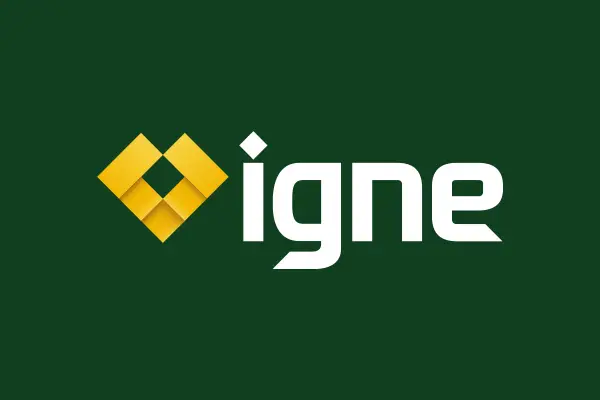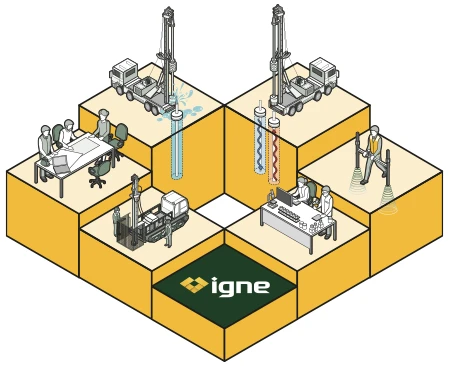

Lidar & Photogrammetry UAV Surveys
Lidar and photogrammetry UAV surveys are highly effective tools for capturing accurate, detailed, and actionable data across various stages of a construction or infrastructure project.
About
What Are Lidar & Photogrammetry UAV Surveys?
These advanced technologies are deployed via drones (unmanned aerial vehicles), enabling the collection of precise measurements from above that can be used for a variety of purposes, including site progress monitoring, topographical surveys, volume analysis, building inspections, and pre- and post-condition assessments.
Lidar (Light Detection and Ranging) and photogrammetry are two powerful methods of remote sensing used in UAV surveys:
Lidar uses laser pulses to measure distances to the Earth's surface or to a structure. This data is then processed to create highly accurate 3D models and maps. Lidar is particularly useful for generating detailed terrain models, even in areas covered by vegetation or complex surface features.
Photogrammetry involves taking high-resolution aerial photographs from different angles and then using specialised software to create 3D models, orthomosaic maps, and other spatial data. Photogrammetry is widely used for producing visual representations and precise measurements of land, structures, and other features.
Together, Lidar and photogrammetry UAV surveys offer comprehensive insights into the physical characteristics of a site or structure, making them invaluable tools for project management, site analysis, and risk mitigation.

Useage
Why Are Lidar & Photogrammetry UAV Surveys Useful?
Lidar and photogrammetry UAV surveys are incredibly useful for various reasons:
High-Resolution Data
These surveys provide high-definition 3D models and maps that are significantly more accurate and detailed than traditional survey methods.
Access to Difficult Areas
UAVs equipped with Lidar and photogrammetry can reach areas that are difficult, dangerous, or costly to survey manually, such as rooftops, construction zones, or rugged terrain.
Real-Time Progress Monitoring
These surveys enable project teams to track progress in real time, offering clear visualisations and precise measurements to ensure that the project is on track.
Versatility Aacross Applications
From volume analysis to pre- and post-condition monitoring, Lidar and photogrammetry surveys can be applied to various stages of a project, providing value across the entire lifecycle of a development.
Trust
Why Trust & Commission Igne for Lidar & Photogrammetry UAV Surveys?
Igne delivers reliable and precise UAV survey services, making us the ideal partner for your Lidar and photogrammetry needs. Here’s why our clients trust us for these specialised services:
Unmatched Expertise
Igne has extensive experience in site investigation and geotechnical services. Our team is highly skilled in both Lidar and photogrammetry technologies, ensuring that the data you receive is accurate, actionable, and tailored to your project’s unique needs.
State-of-the-Art Technology
We use the latest UAVs equipped with cutting-edge Lidar and photogrammetry sensors. This ensures that we provide the highest quality data, whether for topographical surveys, site progress monitoring, or condition assessments.
Customised Solutions
Every project is different, which is why we tailor our UAV survey services to your specific requirements. We deliver data in the format that best suits your project, whether you need detailed 3D models, high-resolution maps, or precise volume calculations.
Comprehensive Reporting
Igne goes beyond just providing raw data. We offer detailed reports and analysis, ensuring that you understand the insights and can apply them effectively to your project planning and decision-making processes.
Risks
The Risks of Not Doing Lidar & Photogrammetry UAV Surveys
Choosing not to conduct Lidar and photogrammetry UAV surveys can expose your project to several risks, including:
Inaccurate Site Data
Without high-precision surveys, project teams may rely on incomplete or outdated data, leading to design errors, miscalculations, or safety hazards. Lidar and photogrammetry provide accurate, real-time data, minimising the risk of costly mistakes.
Missed Progress Tracking
Without regular UAV surveys, you may miss important milestones or potential delays in your project. Real-time site monitoring helps ensure that projects stay on schedule and within budget.
Safety Concerns
Manual surveying methods can put personnel at risk, especially in hazardous or hard-to-reach areas. UAV surveys allow data to be captured remotely, reducing the need for staff to enter potentially dangerous environments.
Increased Costs
Relying on traditional ground-based surveying methods can be more time-consuming and expensive. UAV surveys streamline the data collection process, saving both time and money.
Benefits
The Benefits of Lidar & Photogrammetry UAV Surveys
Benefits of incorporating Lidar and photogrammetry UAV surveys into your project may include:
High-Precision Data
Both Lidar and photogrammetry provide exceptionally accurate measurements, ensuring that project designs are based on reliable, up-to-date data.
Speed & Efficiency
UAV surveys can cover large areas in a fraction of the time compared to traditional methods. This enables faster data collection and quicker turnaround times for analysis and reporting.
Cost-Effective
By reducing the need for manual surveys and speeding up the data collection process, UAV surveys help reduce overall project costs while delivering superior data quality.
Enhanced Decision Making
The detailed 3D models and maps generated by Lidar and photogrammetry surveys give project teams clear insights into the site’s conditions, enabling more informed decision-making.
Versatility
These surveys can be applied to various phases of a project, including progress monitoring, volume analysis, and condition assessments, providing value from start to finish.
Process
How are Lidar & Photogrammetry UAV Surveys Done?
Lidar and photogrammetry UAV surveys follow a well-structured process to ensure accurate and actionable data:
- Initial Consultation
Igne works closely with you to understand the specific needs and goals of your project. This ensures that the survey is tailored to your requirements, whether it’s for topographical mapping, site progress monitoring, or volume analysis. - Flight Planning
Based on the project’s needs, we design a customised flight plan for the UAV. This involves determining the flight altitude, coverage area, and data collection settings to ensure optimal results. - Data Collection
Using UAVs equipped with Lidar and photogrammetry sensors, we capture high-resolution data from the air. This data can include laser measurements (for Lidar) or a series of high-resolution images (for photogrammetry). - Data Processing
After the flight, the raw data is processed using advanced software to generate 3D models, orthomosaic maps, and other spatial data. This ensures that the data is accurate and ready for analysis. - Reporting
Igne provides comprehensive reports that include detailed visualisations and analysis. These reports are designed to be easily understood and actionable, allowing you to make informed decisions about your project.
Learn More
Frequently Asked Questions about Lidar & Photogrammetry UAV Surveys
- What is the difference between Lidar and photogrammetry?
Lidar uses laser pulses to measure distances and generate 3D models, while photogrammetry uses high-resolution photographs taken from different angles to create similar outputs. Both methods are highly accurate, but Lidar is particularly useful for capturing data through vegetation or in low-light conditions.
- How accurate are Lidar and photogrammetry UAV surveys?
Both Lidar and photogrammetry are extremely accurate, with Lidar often providing centimetre-level precision. The exact accuracy depends on the project’s requirements and the UAV equipment used.
- Can UAVs be used for building inspections?
es, UAVs equipped with photogrammetry or thermal cameras can be used for detailed building inspections. This allows for safe and efficient inspections of roofs, facades, and other hard-to-reach areas.
- What are the benefits of UAV surveys for site progress monitoring?
UAV surveys provide real-time data, allowing project teams to track progress accurately and ensure that timelines are being met. The high-resolution imagery and 3D models also offer a clear visual record of the site’s development over time.
- How are Lidar and photogrammetry used in volume analysis?
Both methods can be used to measure stockpile volumes and earthworks. Lidar’s precision is particularly valuable in creating accurate 3D models of large areas, enabling precise volume calculations.
The Next Step
Igne offers expert Lidar & photogrammetry UAV surveys that deliver the accurate, high-resolution data you need to de-risk & optimise your projects.
From site progress monitoring to building inspections and volume analysis, our advanced UAV technology ensures you receive actionable insights in real-time.
Contact Igne today to learn more about our UAV surveys and how we can support your project with tailored solutions and industry-leading expertise.
